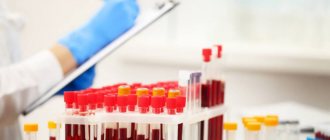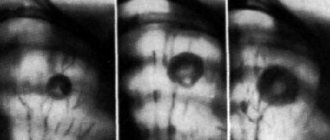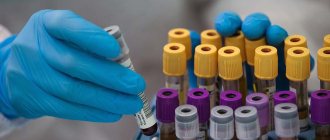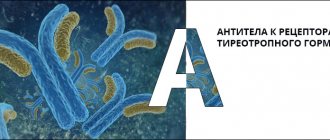Mantoux reaction, Diaskin test, quantiferon test, T-spot, PCR, or maybe fluorography? Let's tell you in more detail.
At Instamed you can undergo all types of tuberculin diagnostics: Mantoux test, DiaskinTest and donate blood for both the Quantiferon test and T-SPOT.TB at the best price in Moscow and Moscow Region - 4990 rubles
Tuberculosis in Russia is so widespread that by the age of forty, 70-90% of the inhabitants of our country are infected with it. This does not mean that they are sick: after infection, most people's immunity copes with the bacteria. The probability of getting sick is on average 8% in the first two years after infection, then gradually decreases, and acquired cellular immunity is formed. Among adults, people who are weakened and live in poor conditions, with a lack of light and fresh air, are more likely to get sick. However, absolutely each of us can become infected. This is why it is so important to get regular TB screenings and have your children tested.
Why is BCG vaccination necessary?
WHO recommends mass vaccination of newborns against tuberculosis in all countries where the disease is common. Therefore, on days 3-5 after birth, while still in the maternity hospital, all newborns are given a free BCG vaccination. But this vaccine does not protect against tuberculosis infection. Her task is somewhat different. If an unvaccinated child under 2 years of age is infected with tuberculosis, he or she is extremely likely to develop tuberculous meningitis and generalized forms of tuberculosis, which very quickly lead to death. BCG quite reliably protects the child from these forms. It also protects children from pulmonary tuberculosis, but is less effective.
Symptoms and first signs of tuberculosis in children
First of all, tuberculosis in children is manifested by such clinical signs as:
- weakness;
- stopping weight gain;
- irritability;
- fatigue during school hours;
- absent-mindedness;
- lagging behind peers in studies;
- body temperature – up to 37.5°C;
- enlarged lymph nodes;
- sweating;
- chills.Source: N.M. Koretskaya Tuberculosis in children and adolescents in modern conditions // Siberian Medical Review, 2010
Forms of tuberculosis and early signs
| Form | Symptoms |
| Tuberculosis of the bronchial glands | Cough, elevated body temperature for a long time, lethargy, fatigue, pallor, thinness. |
| Pulmonary form | Cough, shortness of breath, weakness after sleep, apathy, decreased performance, absent-mindedness, unhealthy blush, thinness, pale skin, sweating, chills, dry (and then “wet”) cough for more than 3 weeks, sputum with blood. |
| Lymph node involvement | An increase in the size of the lymph nodes, their softening, suppuration (the contents leak out), the formation of fistulas in places where pus comes out, scrofuloderma (skin lesions in the form of tumors with subsequent release of the contents). |
| Involvement of bones and joints in the process | Slow development, pain when moving, changes in gait, lameness. |
| Damage to the meninges (tuberculous meningitis) | Anxiety, lethargy, loss of appetite, bad mood, headaches, fever, vomiting, convulsions. |
| With damage to the gastrointestinal tract | Constipation or diarrhea, increased body temperature, blood in the stool, pain. Source: A.V. Mordyk, E.A. Tsygankova, L.V. Puzyreva, A.A. Turitsa Tuberculosis in children of the Russian Federation at the present stage // Pediatric pharmacology, 2014, v. 11, no. 3, pp. 27-30 |
Clinical manifestations by age of children
| Age | Symptoms |
| Infancy (up to one year) | Low mobility, apathy, weakness, attacks of suffocation or coughing, retraction of part of the chest, weight loss (including muscle mass), loss of appetite, cessation of crying, insomnia. Early detection and diagnosis are extremely important, because at this age this pathology is most dangerous. |
| 5-8 years | Decreased activity, weakness, lack of sleep and appetite, loss of body weight, cough, condensation of the chest. |
| 8-15 years | Rapid appearance of pain in the lungs against a background of apathy and weakness, active urge to cough, shortness of breath even at rest, thinning or discoloration of the skin, the appearance of cracks, wounds, hemoptysis, changes in lymph nodes in size and structure, intoxication of the lungs (at the last stage) . |
Manifestations of the chronic form:
- sleep disorders;
- liver enlargement;
- lagging behind peers in physiological development;
- dry and pale skin;
- mild euphoria.
Mantoux test
The Mantoux test is performed annually on all children under 7 years of age. This is not a vaccination (!), but an immunological test that shows whether the tuberculosis pathogen is in the body. In this case, tuberculin, a specific protein containing antigens of human and bovine tuberculosis, is injected intradermally. After 72 hours, the size of the papule is measured. The result of the Mantoux reaction can be affected by visiting a sauna, taking a long bath, swimming in a swimming pool, and scratching the injection site. Temporary contact with water does not in any way affect the results of the Mantoux test, therefore the opinion that Mantoux cannot be wetted is a myth.
Diaskintest test
It is carried out for children from 8 years old. Also a skin test. But if Mantoux uses antigens of both human and bovine tuberculosis, then Diaskintest uses only human tuberculosis antigens. Diaskintest is much more specific: a reaction to it occurs only if there are active tuberculosis bacteria in the body. Simply put, if the Mantoux test is positive, this does not mean anything: this test often gives false positive reactions. But after the Diaskintest, a reaction appeared - this is a more serious indicator.
The accuracy of Mantoux is 50-70%, Diaskintest - 90%.
Quantiferon test
Quantiferon test is one of the new methods for diagnosing tuberculosis using a blood test. It is based on the determination of interferon gamma in the blood, which is produced by cells in response to the introduction of the tuberculosis bacillus. Unlike Mantoux and Diaskintest, the Quantiferon test does not require the introduction of any antigens or bacteria into the body. Blood for research is taken from a vein. The result is ready in a few days and is much more accurate than skin tests. The test will only be positive if the person is truly sick.
Testing for tuberculosis: preparation for school and kindergarten
Russia is among the countries with an unfavorable situation regarding tuberculosis. At the same time, tuberculosis is one of the ten most dangerous diseases that claim the most lives every year. Despite the fact that every year there are fewer cases of infection, tuberculosis remains an extremely common problem that cannot be neglected
Contrary to frequent misconception, tuberculosis is not directly related to either social status or lifestyle. Because of its prevalence, it can be contracted almost anywhere. At the same time, not only adults suffer from tuberculosis.
In 2021 alone, according to WHO, one million children under the age of 14 fell ill with tuberculosis. 230,000 children died from the disease. In the Russian Federation, the share of children is about 5.0% of all cases of tuberculosis.
Early diagnosis is important to prevent the spread of infection. Early diagnosis also offers better prospects for recovery. Tuberculosis is long and difficult to treat, and the sooner it is detected, the faster and more successful the result of therapy will be.
Analysis before school and kindergarten
Upon admission to school or kindergarten, as well as before going to a children's camp, it is necessary to conduct an immunological test for tuberculosis. In case of contraindications to skin tests or parental refusal, it is recommended to conduct the T-SPOT.TB test (according to the Federal clinical guidelines for the diagnosis and treatment of latent tuberculosis infection in children, approved by the Russian Society of Phthisiologists).
Diagnosis of tuberculosis is a matter of safety of children in the team.
Preventive immunological testing for tuberculosis is carried out annually, and in risk groups - screening is carried out twice a year.
Which analysis to choose?
Skin immunological tests: Mantoux test and Diaskintest are widely used for testing children. The methods are accessible and easy to use, but they also have a number of contraindications. The Mantoux test has low specificity, and a positive Mantoux test result requires re-testing with other, more specific immunological tests: Diaskintest, T-SPOT.TB.
For children with allergies and skin diseases, it is preferable to use blood tests for tuberculosis, such as T-SPOT.TB.
T - SPOT .TB - a progressive method of early diagnosis
Early diagnosis of tuberculosis infection involves the detection of a latent (latent) form of tuberculosis. According to the World Health Organization, today between a quarter and a third of the world's population are infected with Mycobacterium tuberculosis. The vast majority of them are carriers of latent, that is, dormant tuberculosis infection. The most progressive and effective method for the early diagnosis of latent tuberculosis is the T-SPOT.TB blood test.
Advantages of the
T - SPOT .TB test:
- High sensitivity and specificity
- No contraindications or restrictions
- Test safety, no adverse reactions
- No contraindications or time restrictions
- No false positive results in case of BCG vaccination;
- Only one clinic visit required
- Quick results
T - SPOT test indicated for a child :
- If there are any contraindications for the use of skin tests
- Children with skin diseases, a tendency to allergic reactions, epilepsy
- In case of a positive Mantoux test to verify the diagnosis
- If extrapulmonary forms of tuberculosis are suspected
- With confirmed HIV infection
Where can I get tested?
In the LabQuest laboratory you can undergo a T-SPOT.TB test quickly, efficiently, in comfortable conditions and without queues. At LabQuest offices, children are given special attention. To ensure that the procedures are quick and painless, our nurses use special instruments that allow them to take blood from a vein almost unnoticeably. Medical offices are equipped with children's areas with busy boards, pencils, markers and fun coloring books.
LabQuest has more than 90 offices throughout Russia. Part of the offices - LabQuest KIDS - specializes in children's services. You can select your nearest office by phone or on the website:
Analysis at home
LabQuest offers a home visit service, which is especially relevant for young patients. Taking tests is stressful for a child. If your baby is calmer at home, our nurses can come to you at a convenient time and carefully draw blood at home. To do this, simply fill out an application on the website:
T.SPOT.TB (“tee-spot”)
This method of diagnosing tuberculosis by blood is similar to the quantiferon test. The difference is that the quantiferon test detects interferon gamma in the blood, produced in response to the introduction of the tuberculosis bacillus, and T-SPOT detects the T cells themselves, which produce interferon gamma in response to the presence of Mycobacterium tuberculosis. Both tests are equally sensitive and informative (up to 97%), they are more sensitive than Diaskintest and much more sensitive than the Mantoux reaction. “T-spot” practically eliminates false-positive and false-negative reactions, while the quantiferon test can still give a false-positive reaction if, for example, the person was sick with ARVI at the time of donating blood.
Tuberculosis (Mycobacterium tuberculosis) (total antibodies)
Antibodies to the causative agent of tuberculosis (M. tuberculosis) are specific immunoglobulins produced by the immune system in response to infection with the causative agent of tuberculosis. Tuberculosis is an infectious disease caused by aerobic mycobacteria (M. tuberculosis, M. bovis, M. africanus, M. microti), common in soil, water and animals. Mycobacterium tuberculosis is a species of mycobacterium that causes tuberculosis in humans in 92% of cases. M. tuberculosis is transmitted by airborne droplets from patients with active tuberculosis. In 90% of people, after a primary infection, mycobacteria settle in the lower parts of the lungs and do not lead to the development of the disease, since an immune response is developed that does not allow an increase in the number of bacteria. However, if the immune system is severely weakened, tuberculosis bacilli begin to actively multiply and tuberculosis passes from a latent form to an active one. Possible damage to the lungs, bones, joints, genitourinary organs, lymphatic system, skin, eyes and nervous system. Microscopic examination of the pathogen in sputum culture is still considered the “gold standard” in the diagnosis of tuberculosis. However, this method has both its advantages (high specificity) and disadvantages (low sensitivity, since a certain concentration of bacteria in the sample is required). The effectiveness of the method is lower for specific categories of people (HIV-infected people, people over 60 years of age and children who also have difficulty collecting sputum). In addition, this study takes a long time, since bacteria require 6-8 weeks to grow. Along with the bacteriological method, X-ray examination is widely used. Both methods are applicable only to pulmonary forms of tuberculosis. On the other hand, using the tuberculin test method it is almost impossible to differentiate latent and active forms of tuberculosis. Differential screening diagnosis of active tuberculosis is possible by determining specific antibodies to M. tuberculosis by enzyme immunoassay. At the active stage of tuberculosis, intensive production of IgG and IgM antibodies to specific antigens begins, which can be detected in the blood serum within a month from the beginning of activation of mycobacteria. High specificity of the test is achieved by using antigens specific to M. tuberculosis, which eliminates false-positive results in individuals vaccinated and infected with other mycobacteria. The sensitivity of this test system ranges from 61% (tuberculosis of the lymph nodes) to 100% (tuberculous exudative pleurisy) depending on the location of the infection; specificity – 95%. Analysis used:
- To detect active tuberculosis, especially extrapulmonary forms.
- To monitor the effectiveness of tuberculosis treatment.
- To identify infected individuals.
- To confirm the diagnosis (along with the use of additional diagnostic tests).
Analysis is prescribed:
- When it is known that the patient has had long-term contact with tuberculosis patients or that his work involves constant contact with people at risk (homeless people, injection drug users, people in prison).
- For appropriate symptoms: weakness, fatigue, low-grade body temperature, night sweats, persistent cough for 2-3 weeks, chest pain (pulmonary tuberculosis), chronic pain in the back, joints, abdominal area with unknown etiology.
- For long-term unsuccessful treatment of chronic prostatitis, cystitis, pyelonephritis and inflammation of the endometrium (tuberculosis of the genitourinary organs).
- For anemia, leukocytosis.
This test is especially important when, with a negative result of X-ray examination, microscopy and the PCR method, there are symptoms of unknown origin, similar to manifestations of extrapulmonary tuberculosis. A positive result is not a sufficient basis for making a diagnosis of “active tuberculosis”, since this analysis must be accompanied by other diagnostic tests (bacterial culture microscopy, PCR) in accordance with the clinical picture and suspected sites of infection for a more in-depth examination. In the early stages of infection, the test may be negative because sufficient antibodies have not yet been produced. In such cases, if there are symptoms of infection, it is recommended to repeat the test after 2-7 weeks or perform other types of testing. The test is insensitive to BCG vaccination, since it involves antigens that are specific for M. Tuberculosis and uncharacteristic for M. Bovis. The possibility of false positive results from this analysis is excluded due to the lack of interference with other types of mycobacteria. The test is designed to detect only the active form of tuberculosis, regardless of its location. This study is suitable for patients with immunodeficiencies of various origins (HIV, oncology), since the test system can detect immunoglobulins of all three classes (G, M, A).
Comparative characteristics of four tests for tuberculosis
| Mantoux | Diaskintest | Quantiferon test | T.SPOT.TB | |
| Accuracy | 50,00% | 90,00% | 97,00% | 97,00% |
| Data evaluation | Subjective | Subjective | Objective | Objective |
| False Positives | Often | Rarely | Rarely | No |
| With latent form of tuberculosis | Not reliable | Not reliable | Reliable | Reliable |
| Contraindications | A lot of | Eat | No | No |
| Adverse reactions | Eat | Rarely | No | No |
| For HIV and other immunodeficiencies | Not informative | Not informative | Informative | Informative |
| Research method | Skin test | Skin test | Blood analysis | Blood analysis |
What else is prescribed with this study?
Sputum analysis for Mycobacterium tuberculosis
16.15. Sputum 1 day
450 RUR Add to cart
Diagnosis of tuberculosis infection using the T-SPOT method
20.136. Venous blood 5 days
RUB 7,200 Add to cart
Mycobacteria, DNA (Mycobacterium tuberculosis complex, PCR) scraping, quality.
19.32.2. Scraping 1 day
290 RUR Add to cart
Culture for tuberculosis (Mycobacterium tuberculosis)
148.0. 45 days
630 RUR Add to cart
Fluorography
All adults over 15 years of age in Russia are recommended to undergo fluorography once a year. Children from 15 to 17 years old are allowed to undergo Fluorography, but this does not cancel the Diaskintest. A certificate with a recent photograph is required everywhere - even when visiting a child in the hospital. Fluorography is more of a “collective barrier” to tuberculosis than a method of choice for individual testing. Fluorography reveals only pulmonary forms of tuberculosis.
If you still have questions about tuberculosis diagnostic methods, call us: 8 495 018-1-741, we will answer them!




